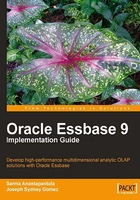
The Third Normal Form (3NF)
The Third Normal Form or 3NF method of database modeling in a nutshell is all about the primary key. What this means is there is no data element in the database that cannot be referenced by the primary key. To achieve 3NF a database must also pass the first levels on normalization.
In the First Normal Form or 1NF the theory is that all of the data in all of the columns must be atomic. This means there can be no sets of data in one column. For instance, a name column that contains both first and last names has sets of data. It is better to have one column for the first name and a separate column for the last name.
To pass the Second Normal Form or 2NF the data must be 1NF compliant and now must also be more key dependent. Where the 1NF model focuses on the atomic nature of the data the 2NF model is more key dependent. What this means is that data in non-key columns cannot depend on the composite or primary key.
Finally there is the Third Normal Form or 3NF which now, on top of organizing the data at the atomic level as well as identifying the data in conjunction with other supporting data, must now be completely primary key dependent. To be 3NF all data in non-key columns must be dependent on the primary key. No more can the data in one column or table be dependent on data in another column or table that is dependent on the primary key.
As we said earlier, there is no right or wrong reason to use either data modeling methodology. Both have their merits and their demerits.
Being the least popular of the data warehousing data models, the 3NF model is actually the most popular data modeling methodology used in active online transactional processing systems.
Ironically, when data is exported from an Essbase cube to a flat file for load to a relational database, it more closely resembles a 3NF data model than a Dimensional Data Model.